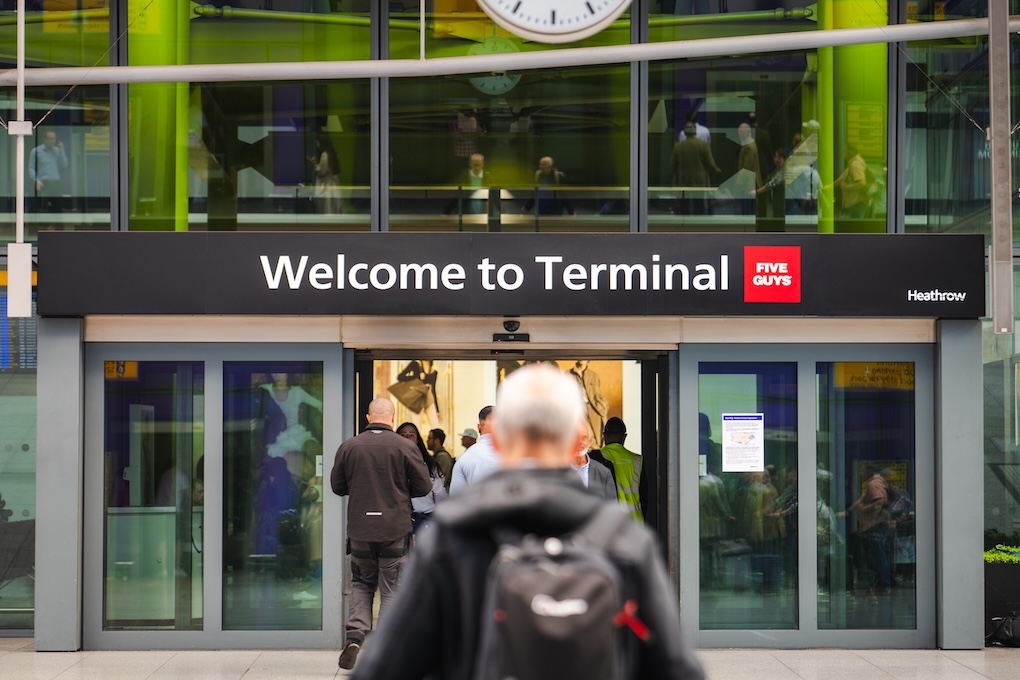BERMUDA. In a major restructure, transport group Sea Containers Ltd (SCL) is to cease its Hoverspeed Dover to Calais ferry route and has put its Silja ferry and cruiseship business up for sale.
In a statement, SCL said “it is no longer able to support Hoverspeed’s losses on the English Channel so it will not operate the Dover-Calais route in 2006 or thereafter. Hoverspeed has commenced consultation with staff as required by labour law, which will result in a significant number of redundancies. A restructuring charge of US$15 million will be established to cover the closure of Hoverspeed’s Dover-Calais services.”
The company added that ferry routes between France and England had suffered from declining passenger and car volumes, excess capacity and reduced profits from low tax merchandise sales.
Turning to Silja, SCL said it had “decided to entertain offers to buy the Silja business”. Société Générale has been appointed to conduct a controlled auction of Silja, it added.
Plans for Silja
Silja of Finland is the leading Baltic ferry operator. In 2005 its profits declined significantly, SCL explained, due to a combination of higher fuel costs which could not be recovered except on services to Estonia; the unsuccessful Finnjet operation between Germany, Estonia and Russia; reduced profits from duty free sales; and overcapacity in the Swedish market introduced by competitors.
“However, Silja still remains the leading operator in its region with an excellent brand name and reputation for quality, with its core business remaining profitable,” added SCL.
Silja is to be reduced to its core business of eight vessels operating on three routes. Silja’s EBITDA for 2004 was US$70 million and for 2005 after absorbing US$22 million of extra fuel costs it expects to achieve EBITDA of $39 million (excluding restructuring costs). EBITDA is expected to improve in 2006 and 2007, assuming fuel remains at today’s costs and excluding restructuring charges. SCL said it was not possible to predict the sale price for Silja.
In order to restore Silja’s health, a number of steps are being taken to improve operating results, according to SCL. These are:
1. The cruiseship Walrus will be sold preferably, or if sale cannot be achieved on satisfactory terms, it will be chartered out. The ship has recently ended a long-term charter.
2. The Swedish flag cruiseship, Silja Opera, will be sold preferably, or if sale cannot be achieved on satisfactory terms, the ship will be chartered out for operation outside the Baltic without high-cost Scandinavian manning. The ship will operate in the Baltic until February 2006, relieving the ships Silja Serenade and Silja Symphony which will be undergoing three-year surveys and docking at that time. SCL said: “Silja regrets the loss of the Silja Opera which has established a good market following, but trade unions have been slow to allow manning conditions which would enable the vessel to continue to operate in the Baltic.”
3. The Finnjet has left the Baltic and is currently on charter to Louisiana State University Health Science Center through FEMA, based in Baton Rouge, Louisiana. This vessel will not return to the Baltic. The vessel will be offered for sale, or failing sale on satisfactory terms, it will be chartered out.
4. The ro-ro ship Starwind has been sold for US$5.4 million in the fourth quarter.
5. Silja’s three SuperSeaCat fast ferries will be reduced to two for operation between Helsinki, Finland and Tallinn, Estonia. Financial performance will be improved through better manning arrangements and other operational measures. The third SuperSeaCat will be returned to Sea Containers for deployment in the Mediterranean in 2006.
6. Silja’s flagship service employing state-of-the-art vessels Silja Serenade and Silja Symphony, each with 2,852 beds, will be given a US$12 million upgrade to freshen the product and boost their profitability.
7. Silja’s largest vessel, Europa, will continue to operate on the Turku-Stockholm and Turku-Kappelskar routes together with Festival, which operates between Stockholm and Turku. Silja also operates two roll-on, roll-off ships on the Turku-Stockholm route and these vessels are capacity constrained.
8. Silja will reduce its staff and offices in Finland, Sweden and Germany, including up to 150 shoreside jobs at a cost of up to US$10 million, achieving annual savings of about US$18 million. Additionally, a plan for improved internal cost efficiencies is being implemented to achieve further annual savings of US$10 million by the end of 2007.
9. A restructuring charge of US$70 million in connection with the plans outlined above will be recognised in the fourth quarter of 2005.
Silja owns or part-owns nine car-carrying ships. One SuperSeaCat is on long-term profitable charter, and two of the vessels are operated in the Adriatic in a 50/50 partnership with the Mediterranean Shipping Company group. It is planned to put a fourth vessel owned by Sea Containers into the partnership from 2006. The company also operates fast ferry services in the Cyclades Islands in Greece in 50/50 partnership with the Eugenides Group. It is planned to introduce a second vessel in 2006. Two of the company’s car-carrying fast ferries are awaiting charter or sale and will be sold in due course. Two sister ships are employed in joint ventures in the Mediterranean where they will remain. But the board has determined to write them down by US$15 million to estimated current market value.
SCL said that despite the re-deployment or sale of car-carrying fast ferries it is unlikely that this business will cover its full costs in 2006 unless either fuel prices decline or fuel surcharges can be collected to cover the high fuel costs. However, this deployment is expected to improve significantly the operating results from the car-carrying fast ferry fleet in 2006. The company will no longer operate any of these ships itself but instead will charter them out to joint ventures or other operators.
Restructuring costs
Due to the downsizing of the company’s activities SCL said it will be necessary to reduce central costs at the company’s headquarters in London, which will be completed by the end of 2005. The company has entered into a binding contract for the sale of its remaining interests in the port of Newhaven, UK for US$20 million, realising a profit of US$10 million.
SCL President James Sherwood said that restructuring charges for possible losses on sale of Silja ships, redundancy costs of Silja and those in connection with the closure of Hoverspeed, the write-down of values of the four car-carrying fast ferries and other costs would total US$157 million pre-tax.
“As a result of the losses incurred in ferry operations in 2005, when combined with these cash and non-cash charges, the company will report a very large loss in 2005. However, these measures should set the stage for a return to profitability,” he said.
Sherwood also also indicated that the company still intended to exit its investment in Orient-Express Hotels Ltd. “Proceeds from sale of these 9.9 million shares will likewise strengthen the company’s balance sheet and a substantial profit will be reported, which will in large measure offset the US$157 million restructuring charge.”
MORE STORIES ON SILJA AND HOVERSPEED
Hoverspeed sues UK Customs & Excise for heavy-handed passenger searches – 11/10/2004
Hoverspeed launches drive-through shop scheme – 18/08/03
Heathrow, Seoul, Dubai top Generation duty free rankings; Silja highest ferry company – 16/06/04





